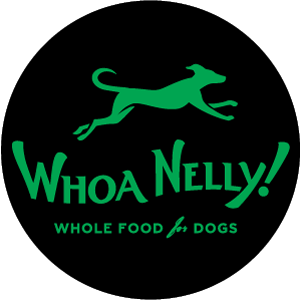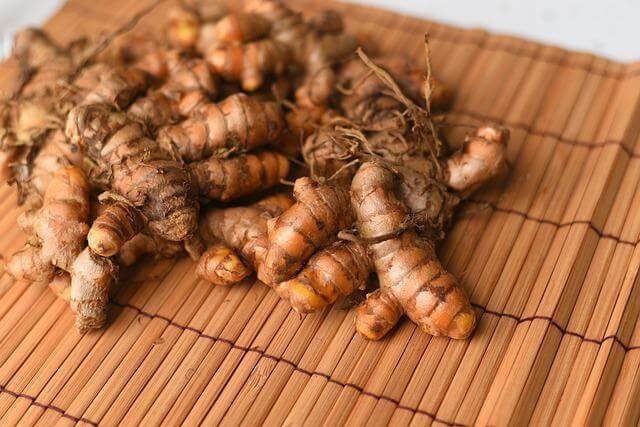How To Choose The Best Dog Food
In This Article
How do you choose the healthiest diet for your dog? With so many brands to pick from, it can be really difficult to decide which one is the best to feed. It doesn’t help that almost every dog food company claims to make the best diet in the world!
There’s much more to a healthy diet than just quality ingredients. How the food is formulated is just as important. This article examines the five keys to healthy dog food, and how to choose the best diet for your dog.
1. Nutrition standards
The food that your dog eats fuels their body, as well as regulates systems like digestion and immunity. What you feed you dog has a profound impact on their health and wellbeing. We want to get it right!
On a macro level, dogs need large amounts of high quality protein, a moderate amount of fat and low levels of carbohydrates. And just like people, dogs need a minimum amount of vitamins and minerals each day to be healthy.
If your dog’s food meets the minimum amount of nutrients according to the Association of American Feed Controls (AAFCO) then it is “complete and balanced”. This is the standard that most vets recommend when discussing nutrition for your dog. However, the AAFCO guideline has a wide range of allowable levels, so it’s really just the minimum acceptable level. The best dog food meets the more precise National Research Council (NRC) standard for “optimal” nutrition.
As a non-negotiable minimum, the food you feed your dog needs to meet the AAFCO “complete & balanced” standard. If you can find it, it’s better to feed food that is formulated to meet the NRC “optimal nutrition” standard (but it’s hard to find, so don’t worry if you can’t).
2. Quality ingredients
A good diet does not contain rendered meat products, anything with numbers, or any ingredient you can’t buy at a supermarket. If you don’t know what an ingredient is, don’t feed it!
A healthy diet for dogs consists of these ingredients:
meat
organ
bone
fish
fruit & vegetables
eggs (optional)
seeds & nuts (optional)
functional foods (optional)
The quality of ingredients which are used in your dogs food are going to have a huge impact on the overall nutrition it provides. Good quality ingredients are not only more nutritious, but are more easily absorbed by your dogs body.
Contamination is a huge issue with pet foods, as we’ve seen many deaths and recalls in Australia over the last few years due to bad ingredients. Earlier this year meat in dog food was contaminated with toxic camel. 25 dogs died in Victoria because of this meat came from a knackery, which doesn’t have the same standards as a human grade facility.
For produce, feeding organic is the best way to avoid pesticide contamination and improve overall nutrition. Studies show that organic produce is more nutrient dense than conventionally farmed food. Feeding organic means there are no pesticides, no hormones, and no chemicals in your dogs diet. These can all impact negatively on your dog’s health, so are absolutely worth avoiding if possible.
Only feed food made with human grade ingredients. This is the only way to avoid contamination issues as human food is heavily regulated, and animal food is not. Feed the best quality food you can afford, ideally organic (but don’t worry if that’s to expensive - just make sure it’s human grade).
3. Balance The Fats
Fats provide a source of energy, help the absorption of vitamins, and regulate the immune and metabolic systems. The fats your dog eats become part of the cell membranes throughout their body, so again quality is important. Ensuring that your dogs diet has balanced fats is critical to minimise inflammation and the damage it causes.
There are several types of fats, including essential fatty acids (EFA) Omega-3 and Omega-6. These fats are called “essential” because your dog is unable to produce them on their own. This means that they must be found in the diet, otherwise your dog will be deficient.
Different sources provide different types of fat. For example, DHA is found almost exclusively in oily fish. For this reason it’s a good idea to provide fat in the diet from varied sources. Ideally, you want fat from animal, plant and marine sources to make sure that all the required fats are present in the diet.
The balance of the fats is very important. There needs to be enough Omega-3 to balance the Omega-6 for the body to work effectively and to reduce inflammation. A ratio of between 1:3 and 1:6 is best. This means not too much chicken! Chicken is great, but it contains a large amount of Omega-6 which makes getting the fat balance right incredibly difficult. Be wary of an all chicken diet.
Ask your dog food company about their fat balance. If they are unable to provide any information, it is likely a poor choice for your dog. Ideally they will respond with an Omega 3: Omega 6 ratio of between 1:3-1:6.
4. Balance the minerals
Minerals have a wide variety of functions in the body, from activating enzymatic reactions, to the formation of bones, to controlling nerve impulses. The most abundant minerals are calcium and phosphorous, which are mostly found in meat and bone. It’s one of the main reasons that feeding fresh meat is so important.
The wild prey your dog’s ancestors ate had a much higher mineral content that in modern farmed animals, which means dogs have a relatively high requirement for minerals. And unlike with some vitamins, dogs can’t make minerals themselves, so they need to be present in the diet.
Beware though! Excess minerals are hard to excrete and will accumulate in your dogs body. It’s important to feed the right level of minerals in the diet - hence meeting the nutritional standard.
The balance between minerals is as important as their individual levels. In fact, too many minerals are as harmful as to little. Getting the ratios right is key. The most important ratio is calcium and phosphorous, with dogs needing slightly more calcium. A ratio of between 1.2:1 and 1.4:1 is ideal.
Ask your dog food company about their mineral balance, in particular their calcium to phosphorous ratio. If they are unable to provide any information, the food is not well formulated. Ideally, they will respond with an Ca: Pa ratio of between 1.2:1 - 1.4:1.
5. Minimal processing
The final consideration is how these ingredients are treated. Processes like cooking or extrusion have a negative impact on the nutrition that remains in the food. Heating food changes it’s molecular shape and means that it is less easily digested. For this reason it’s important to feed food that is in as close to natural state as possible.
To make kibble, the ingredients are mixed together and then heated to over boiling point under extreme pressure. This is pushed through a screw and cut into pieces. The result is “shelf-stable” but dogs won’t eat it, so it is sprayed it with a palate enhancer. The processing also destroys much of the ingredients nutrition so synthetic vitamins are also added.
The problems with this approach to making food are numerous. It denatures the protein and creates harmful byproducts like acrylamides. Even expensive kibbles go through this process.
Compare this to raw food which is made by simply combining human grade ingredients and freezing. The freezing process has a minimal effect on the nutrition and is a traditional method of food storage for humans. Once defrosted the food is as close to it’s original state as possible. For us, freezing raw food is the best way to minimise processing your dogs food.
Feed your dog a diet made with fresh ingredients, in as close to natural state as possible. Choose a high quality diet that is fresh or frozen.
6. Optional: add functional foods
Food is medicine, so it should come as no surprise that many ingredients have scientifically proven health benefits. These foods are known as functional foods, and can improve brain function, modify gut function and can reduce the risk of illness. While they are not essential for survival, functional foods can significantly improve your dog’s health and wellbeing.
Functional foods include:
Turmeric
Coconut Oil
Reishi Mushroom
Spirulina
Apple Cider Vinegar
Before feeding functional foods, make sure you are feeding food that is properly formulated, made with quality ingredients, has balanced fats & minerals, and is minimally processed. If you are ticking all these boxes then adding functional foods will be more effective.
Choosing a commercial diet
If you can find a commercial dog food that meets all these criteria, you have found an amazing diet for your dog! The food we make at Whoa Nelly! meets all of these standards. Our food is formulated to meet AAFCO and NRC nutrient guidelines, is made with organic and locally sourced ingredients, has properly balanced fats and minerals, and is minimally processed.
We utilise functional foods like turmeric and spirulina for an additional health boost. In addition our food contains our own probiotic Nelly Belly and Baby Belly for gut support. It’s the best diet available for your dog!
If Whoa Nelly! is not available were you live, this article should provide a good way to find the best diet for your dog. I’d suggest getting in contact with any dog food company you are considering and grilling them on these points. If they are completely transparent about their food then you can be more confident their diet will be good for your dog.
Homemade diets: use a reputable recipe
While the fundamental elements of canine nutrition are quite simple, formulating a diet to meet the nutritional standards is not easy. Be very wary of advice you find on the internet (yes, irony noted). I have seen an unbelievable amount of unbalanced, nutritionally incomplete recipes and wildly incorrect advice online.
Please find a reputable source of information.
The best book on the subject is Steve Brown’s “Unlocking The Canine Ancestral Diet” which looks at the ancestral nutritional requirements for dogs and how to formulate a balanced raw diet. What I love about this book is the depth of information and a scientific approach to recipe formulation. It contains several great recipes that are easy to make at home. If you are making your dogs food reading this book will improve your dogs health and longevity.








